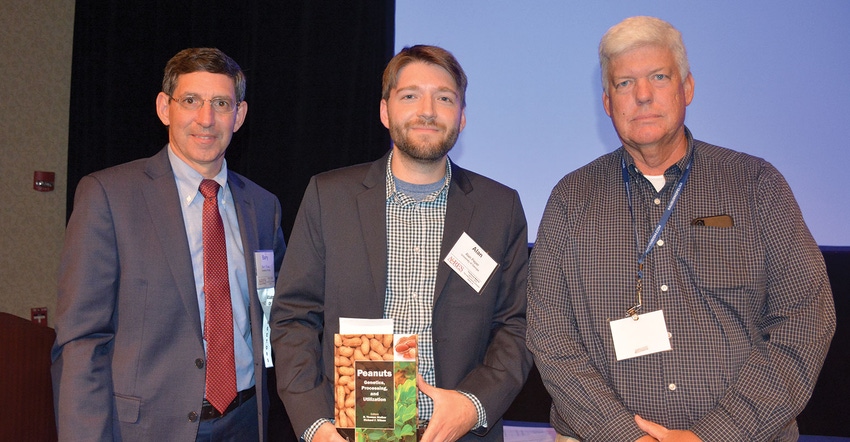
The research papers and posters graduate students presented at the 51st annual American Peanut Research and Education Society meeting offered a vision of the innovations the peanut industry can expect over the next few decades and a view into the bright young minds that will be leading those efforts.
Presentations covered the gamut of peanut production, says Bob Kemerait, University of Georgia plant pathologist and moderator of the Joe Suggs Graduate Student research presentation competition.
Entries in the National Peanut Board Graduate Student Poster Competition also covered a broad range of peanut industry issues.
“The scope of these presentations covers from before the peanut is planted through the value of the crop as a source of nutrition,” Kemerait said following the final presentation.
He added that the technology available to graduate student research showed up in all of the projects. “State of art technology is so much more advanced than when I was a graduate student 20 years ago,” he said. “Unmanned Aerial Vehicles, GPS and the ability to collect and analyze data were on full display throughout the presentations.”
He said the presentations included basic research, the results of which may improve peanut production, storage, efficiency and nutrition within 10 years, and also practical studies “that farmers can use next year. Research evaluated products on the market now.
“The papers also displayed excellence in research and presentation,” he added.
What farmers need
“These papers covered the gamut of what peanut farmers will need.”
Gary Schwarzlose, Bayer Crop Science and APRES board member and president-elect, said graduate student research papers demonstrate the range of research conducted across the peanut industry and bodes well for the future of the industry.
“These presentations show that graduate students have done the work in the field and in the lab, but also that they are developing the skills to present their findings to their mentors and peers within the industry.”
From the work these student researchers perform, the industry may find the next generation peanut breeder, another Charles Simpson, or the next exceptional Extension specialist, another Frank McGill, perhaps, Schwarzlose said.
Alan Peper, University of Georgia, took first place in the poster competition with a presentation on peanut pod development.
Amanda Kaufman, North Carolina State University, won the Joe Suggs Graduate Student Competition with a presentation on high oleic peanut cultivars digging dates.
Other presentations
Other notable presentations included Caleb Weaver’s (University of Georgia) research into storage effects on seedling germination, which earned him second place in the Joe Suggs Competition.
Kayla Eason’s (University of Georgia) presentation on peanut response to dicamba and glyphosate earned third place.
Misbah Munir, Clemson University, took second place in the poster competition with research into disease detection in peanuts.
Past President Peter Dotray, professor at Texas Tech and Texas A&M Extension weed specialist, who moderated the annual awards ceremony, praised the work and contributions graduate students are making in the peanut industry.
He said the recently established graduate student APRES chapter offers young scientists the opportunity to learn from and share research efforts with their mentors and peers.
He also announced that a change in the APRES by-laws will include the student APRES chapter president to join the APRES board of directors.
APRES President Rick Brandenburg, in a recorded message from his home in North Carolina where he was convalescing from an illness that prevented his attendance, encouraged APRES members to “be the person that makes a difference in a young person’s life and en
About the Author(s)
You May Also Like






